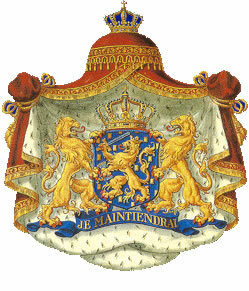THE Poland is a country located in central Europe.. With just over 37 million inhabitants, it has an important historical past, as it was the scene of major world decisions, such as the signing of the Warsaw Pact, after the Second World War.
Read too: Where is it and what is Scandinavia?
General data for Poland
Official name: Republic of Poland.
Gentile: Polish or Polish.
Extensionterritorial: 312,685 km².
Location: Central Europe.
capital: Warsaw.
Government: democracy, in a parliamentary system.
Divisionadministrative: it is a country divided into 16 provinces — Kujavia-Pomerania, Greater Poland, Lesser Poland, Lodz, Lower Silesia, Lublin, Lubusz, Mazovia, Opole, Podlachia, Pomerania, Silesia, Subcarpathia, Santa Cruz, Warmia-Masuria and Pomerania Western.
Language: polish.
religions: predominance of Roman Catholicism (almost 90% of the population).
Population: 37,887,771 inhabitants.
Densitydemographic: 123, 72 inhab/km².
Human Development Index (HDI): 0,88.
Currency: zloty, which equals 0.26 US cents (2020).
ProductInternalGross (GDP): 585,661 x 1,000,000 dollars.
per capita GDP: 15,444 dollars.
spindleschedule: GMT + 1, that is, one hour ahead of the Greenwich Mean Time.
Poland map

geography of Poland
Located on the European continent, Poland does border with the following countries:
Germany, to the west;
Czech republic, southwest;
Slovakia and Ukraine, South;
Belarus and Lithuania, to the east.
To the north, it is washed by the Baltic Sea.
Do not stop now... There's more after the advertising ;)
Withclimate seasoned, Poland suffers influences of sea currents the Baltic Sea and continental factors such as high altitudes in some areas of the country. Average annual temperatures are around 8 ºC. During the months of March and September, the averages can reach 20º, mainly during the summer. It is during these months that the tourist season reaches its peak, but there are tourists who prefer the Winter, when temperatures can reach negative maximums.
At the relief, the country has an average altitude of 173 meters, with extensive plains and over 9,000 lakes. The country's highest point is the Rysy, with an altitude of 2,499 meters.

Poland Demographics
The vast majority of the Polish population is made up of Poles (98%). There is a small portion of Ukrainians (1%) and other peoples (1%) in the country. With almost 38 million inhabitants, is a mostly Catholic country, and 89% of the population practices this religion. Pope John Paul II, or Karol Józef Wojtyla, even, was Polish. Furthermore, the teaching of this religion in schools is approved by 72% of Poles.
In recent years, there has been a decrease in the country's population. Decrease of birth rate/fertility and emigration are some of the causes of this decrease. countries like United Kingdom, Germany and U.S concentrate a large number of Poles, who are looking for better opportunities. The Polish language is the official language, but as a second language, English and German stand out, which may justify the choice of these countries for emigration.
See too: What is the difference between relative population and absolute population?
flag of poland

Economy of Poland
Of the economies of post-communist countries, Poland deserves the most attention. figuring out among the ten largest European economies, the country was the only one to avoid the recession that hit the Europe between 2008-09.
Your GDP has growth above 3% per year, and the country is self-sufficient in food production, especially potatoes, rye, beetroot and dairy products. Beef, pork and sheep farming guarantees the export of these meats to others European countries.
In economic sectors, the population is distributed as follows:
primary (8,9%);
secondary (32%);
tertiary (59.1%), the latter being responsible for 56% of the country's GDP.
With the pandemic In 2020, Polish GDP performed below expectations, with negative growth of -3.6%. However, this data is seen with good perspectives, given that all countries in the world showed similar or worse performance, considering the atypical moment that was experienced.
Poland tourism
In 2018, the country saw a record number of tourists entering its territory: nearly 20 million people. Even with a historical past of terror due to what was experienced in World War II, such as the holocaust, the country rebuilt after the end of the Cold War, modernizing itself and attracting tourists from all over the world, especially those who love history.
The most pleasant months to visit the country are from March to September, between the spring it's the autumn. The hottest month is July, with temperatures that can reach 20ºC.
Four cities are the most visited: Gdańsk, Łódź, Poznań and Warsaw, which have great infrastructure for tourists. However, for lovers of medieval buildings, the highlight is on account of Malbork. It is in this city that the largest brick fortress in the world is located, present in the list of World Heritage Sites, formulated by Unesco.
The country is filled with castles and palaces, legacies of a glorious and fantastic medieval past, in terms of architecture and urbanism.

culture of Poland
Catholicism is a strong mark in Polish culture. On festive days or religious holidays, the country interrupts its activities to visit churches and temples, and many Poles spend the day with their family.
In cooking, Potatoes and pork are sure to be part of Polish dishes. The country stands out in the production and creation of these foods.

Also access: What is material culture and immaterial culture?
Curiosities from Poland
Religion is something extremely significant in the country, influencing social habits. With support from the Church, there is a law that, since 2020, has prohibited commerce on Sundays.
It is very difficult to find homeless animals in the country, as the Poles are very concerned about any type of animal.
Great historical characters are Polish, such as Nicolas Copernicus, Frédéric François Chopin and Pope John Paul II.
During Catholic holidays and religious festivities, practically everything is closed.
Auschwitz, a Polish concentration camp used in World War II, can still be visited by tourists from all over the world. Currently, this field is a museum.
By Attila Matthias
Geography teacher


